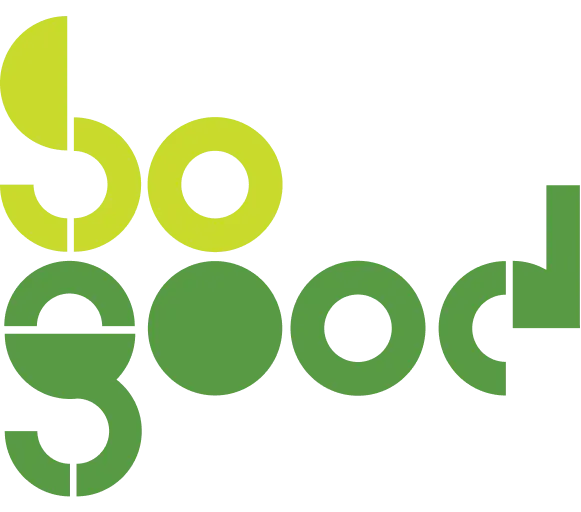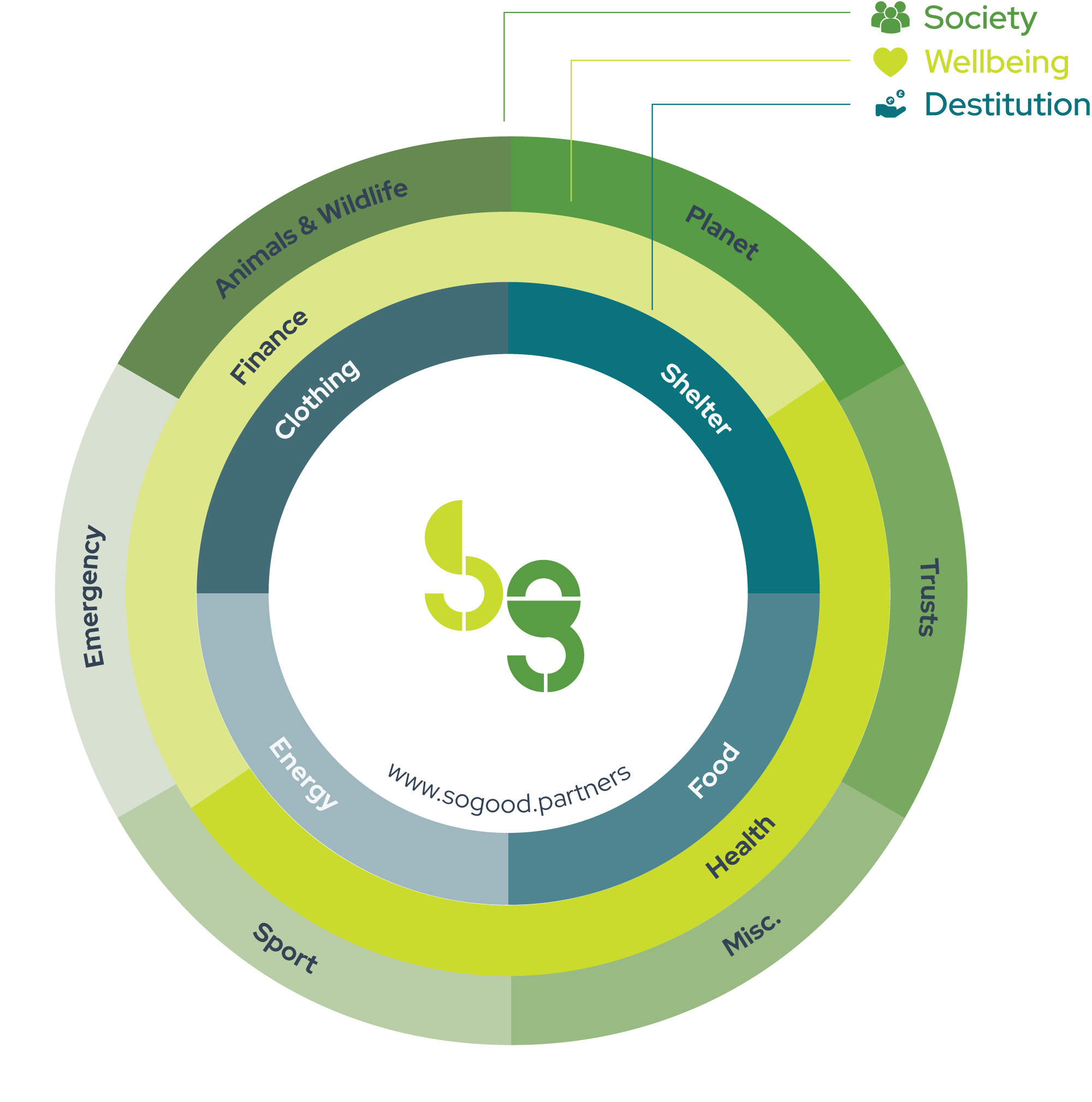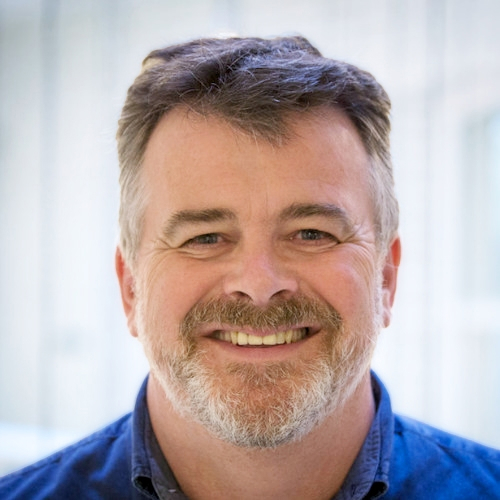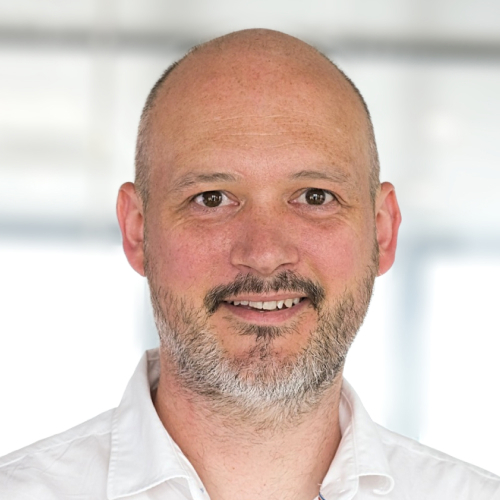The disparity in charity income
There are almost 170,000 registered charities in the UK. From tackling primary needs such as homelessness and hunger to societal needs such as animal protection and community arts projects, this diverse array of operations encompasses charitable incorporated organisations, charitable trusts, charitable companies and even the odd unincorporated association, all working across numerous issues and areas.
One of the key issues affecting the majority of these organisations is a significant disparity in funding: a handful of well-known charities receive the largest slice of the pie, whether through grant funding and the professional grants application systems they have in place, or through donations from members of the public.
As data from YouGov illustrates, people are most likely to donate to a few familiar household names, with a top 10 including MacMillan, Cancer Research UK, the British Heart Foundation, Guide Dogs, the RSPCA and the RNLI.

Income distribution is skewed
There are two dimensions we need to interrogate when looking at the distribution of funding in the charity sector. One is “size” and the other is “purpose”.
Charity size imbalance
Below is the latest available data on UK charities by size.
| Income band (p/a) | Name | Number of organisations | % of all organisations |
|---|---|---|---|
| Less than £10,000 | Micro | 77,295 | 47.14% |
| £10,000–100,000 | Small | 54,431 | 33.20% |
| £100,000–1M | Medium | 25,569 | 15.59% |
| £1M–10M | Large | 5,861 | 3.57% |
| £10M–100M | Major | 743 | 0.45% |
| More than £100M | Super-major | 61 | 0.04% |
| All organisations | Total | 163,959 | 100.00 |
Source: NCVO, Charity Commission 2020/21
The imbalance is clear to see. Micro, small and medium-sized charities in the UK represent 96% of the total, yet they attract a fraction of the total funding available. 80% of the total are Micro and Small charities under £100,000. A staggering 47% of charities classified as Micro survive on less than £10,000 per year. Assuming the micro charities achieved the maximum level of funding (which will not be the case), this would amount to approximately 1.4% of the total funding available. If we were to round these numbers up for dramatic effect, we could say that 50% of UK charities exist on 1% of the total funding available. This does not feel right.
Charity purpose imbalance
Visualising income by classification — or charity type — is not straightforward. In our research to date, we have not found a solution that we believe can be useful or actionable to address the needs of levelling-up.
The NCVO publish income data by subcategory which we feel obscures the nature of the underlying charity purpose, making the data unhelpful when addressing grass-roots levelling up. The chart below shows 'Social Services' as the biggest recipient of money, but as a category, we feel this is too general.
The UK Charity Activity Tags project, which aims to categorise all registered UK charities in collaboration with the NCVO and the Centre for Regional Economic and Social Research at Sheffield Hallam University, has published output (see diagram below), but could a simpler approach ultimately prove more useful?
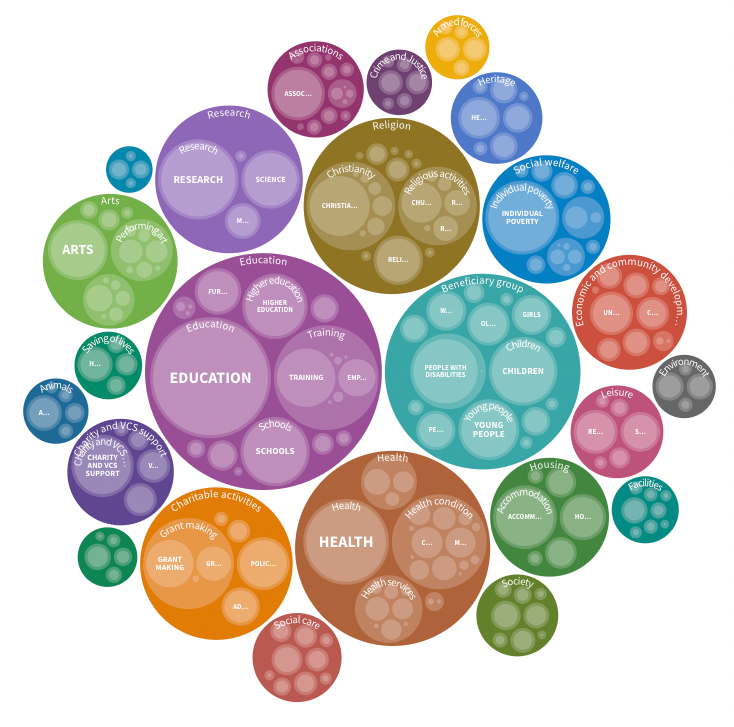
UK Charities grouped by classification and income.
Source: UK Charity Activity Tags
These large organisations are all excellent charities doing important work around worthy charitable purposes. Nonetheless, the issue remains that, generally speaking, charitable organisations working directly to solve destitution (aka, a lack of money, food, shelter or possessions) do not receive the same level of funding despite the severity and urgency of the help they provide in society.
Charities tackling destitution are poorly funded
Our preliminary findings suggest that, regardless of their size, charities prioritising fundamental human needs receive a notably smaller portion of available funds within the sector. We see this as a troubling trend, especially in light of these charities' direct contribution to societal well-being and their crucial role in alleviating suffering.
It’s an inexact science but some societal needs simply seem more seductive; people are more compelled to give to dogs at Christmas than they are to a charity offering financial support for energy bills or advice on managing debts to prevent people becoming homeless.
The team at SoGood Partners is undertaking the task of pulling from available data sources to create a unified and useful resource that allows anyone to explore how charity funding is actually distributed by size and purpose across the country. We expect that this will highlight the gaps that need to be addressed to ensure the sector does not lose the potential social impact that those charities can provide.
Actionable outcomes could entail more targeted fundraising through better visibility, or it may entail providing a platform that allows adjacent and overlapping micro charities to join forces or merge operations.
Increased visibility of various charity types in the UK
It’s an imbalance we at SoGood feel compelled to tackle. In our view, this is a visibility problem underpinned by a lack of proper data and useful taxonomy.
Right now, there’s no clear way for people to see and understand which charities are getting the higher proportion of funding by purpose and geo-location. Essential third sector providers are struggling, and causes are being neglected.
So, how to make the charitable landscape visible in a simple way? We've seen it attempted before, for example, the NCVO’s definition of the voluntary sector, but this model feels overly complicated and unclear. Ultimately, it isn’t really achieving what it needs to.
To engage with this problem properly, we need to be able to clarify the different categories of charities into a simple-to-understand structure. That means grouping specific charities together, based on commonalities and themes. After all, the easier it is, the more likely people will be motivated into action. We started to address the need for the evolution of the vocabulary of the sector in our third sector lexington post. This work takes that further.
Our solution: The SoGood Lens
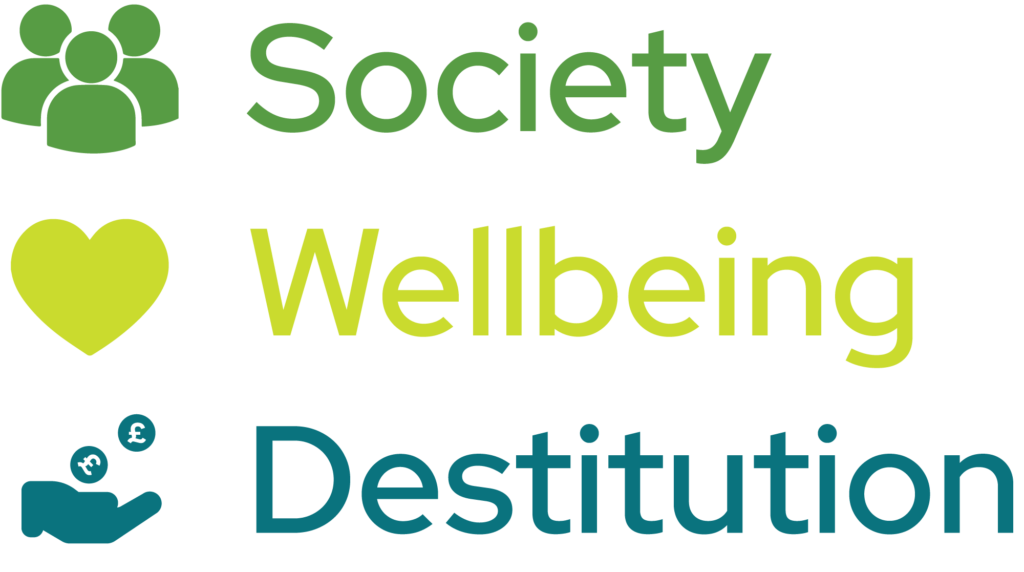
What it means
We’ve developed the SoGood Lens to focus and prioritise our efforts. It shows three rings:
The inner band reflects destitution needs. That includes charities working in food (eg, Trussell Trust), energy (eg, National Energy Foundation), clothes (eg, Clothes Aid) and shelter (eg, Shelter).
The middle band reflects wellbeing needs. That includes charities working in health (eg, MacMillan and Cancer Research) and finance (eg, The Money Charity).
The outer band reflects societal needs. That includes charities working across emergency services (eg, Air Ambulance), animals and wildlife (eg, RSPB), sport (eg, Youth Sport Trust), the planet (eg, Friends of the Earth) and charitable trusts (eg, Charitable Aids Foundations).
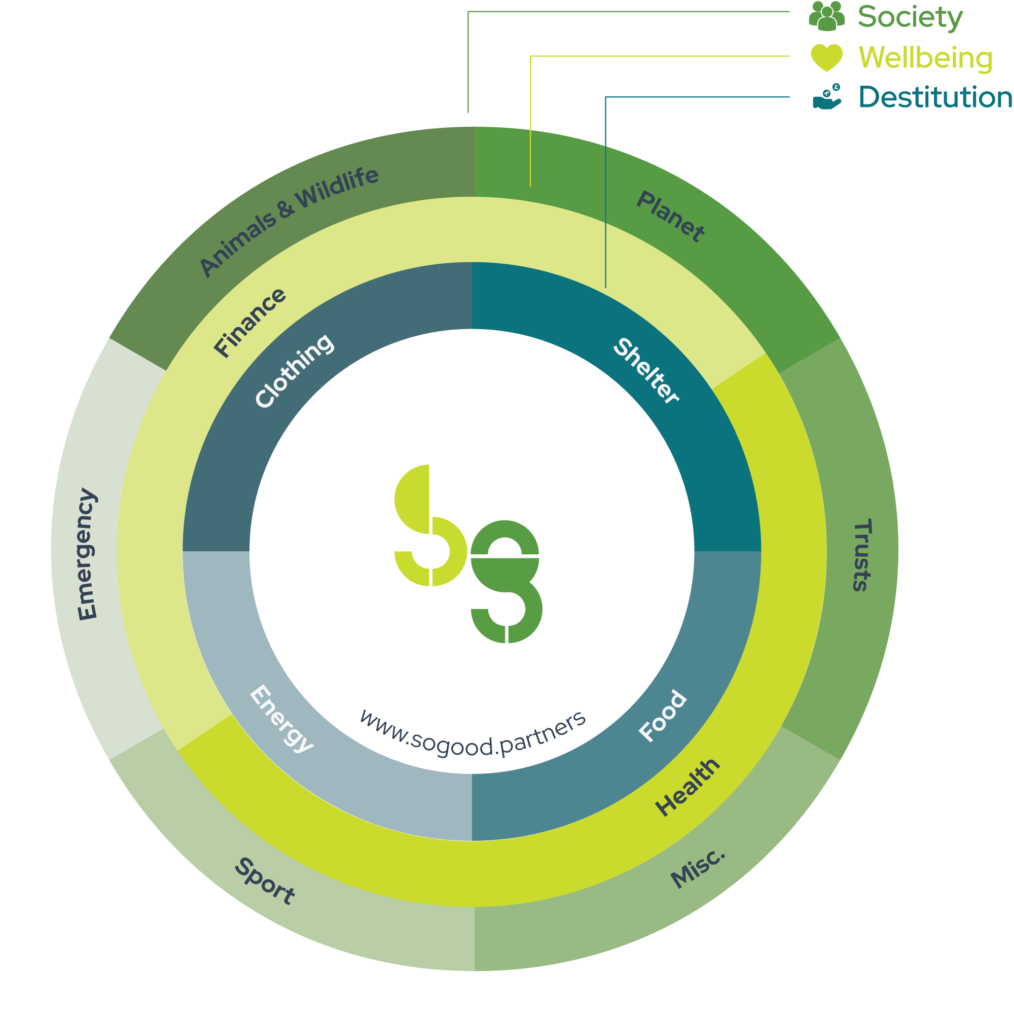
We want to put human needs at the centre of our work and our focus. So, taking inspiration from Maslow's 1954 Hierarchy of Needs model, we have created a tool better suited to the work of the Third Sector.
How the lens will guide our work
Clarifying the disparity
While we could have adopted Maslow’s Hierarchy of Needs, we ultimately decided it insufficiently reflects the complexity – and interconnectedness – of the charity landscape and the ripe potential for collaboration that exists within and across the different bands.
We also wanted to make it really clear, in visual terms, the disparity of funding that exists across the different categories.
Our own preliminary research indicates a disproportionate amount of third sector funding goes towards the outer ring of our lens – to emergency service charities like the RNLI, animal and wildlife charities like the RSPB, and advisory health charities like MacMillan. We'll be releasing more on that soon.
Keeping our focus on tackling destitution
From the outset, SoGood has taken a human-centric perspective, addressing the needs of charities directly involved in alleviating poverty and destitution. That’s why we’ve positioned destitution at the centre of our lens.
As our work has progressed, we’ve come to appreciate the wider charity landscape and can see that our macro digital solutions could have a broader impact than we originally thought. The lens enables us to prioritise and focus our efforts. It ensures we don’t lose sight of our original focus, while still permitting us to qualify opportunities that fall outside this band.
An example
One useful example is our work with St Vincent de Paul Society, a charitable organisation dedicated to tackling poverty in all its forms. This charity would sit firmly in the centre of our lens as their work spans the destitution topics outlined. These include food banks, hot meal kitchens and community shops that stop people from going hungry, as well as an overseas aid project providing direct funding in the case of natural disasters and emergencies.
With SVP, we're working across two main activities: efficient allocation and visibility.
Inventory management
SVP provides a vast array of things to help their service users. This spans different food products, clothing, hygiene items, and even hot meals. That's a lot of stuff to track, from keeping supplies well-stocked to making sure things are where they need to be. SoGood Partners is piloting an inventory management solution that will make this process seamless and efficient —ultimately working nationally to aggregate all replenishment requirements into the most cost-effective supply channels.
Social media tookit
Community engagement is key to SVP. It engages with schools and other local organisations to educate the public about destitution in order to de-stigmatise those unfortunate to find themselves in that situation. The organisation collects donations (food, money, clothes, etc) and relies on community support to distribute items to those who need them. Social media is an important communication tool for closing the loop with their supporters. SoGood Partners has created a framework to allow SVP to better use the medium, and we're now working on building a pro bono agency directory where commercial agencies can find charities to work with.
How our lens can affect the Third Sector
We think this lens will help people better understand and navigate Third Sector organisations and their differing needs. It makes clear which causes have the most immediate impact in the short-term and, backed up by the relevant data, shows how those charities need more financial support to help the communities in which they operate. The disparity needs to be fixed.
We'll be applying our lens directly to our Charity Mapping tool. Currently in development, this tool will improve visibility and access for service users in the UK. We're also creating a bespoke platform to help similarly-minded charities to improve their impact through collaboration, based on where we understand each organisation to sit within the lens.
If you want to find out more
If you're working at a third sector organisation and are interested in our approach, we'd love to talk to you to see if there are ways we can help. Get in touch here.
